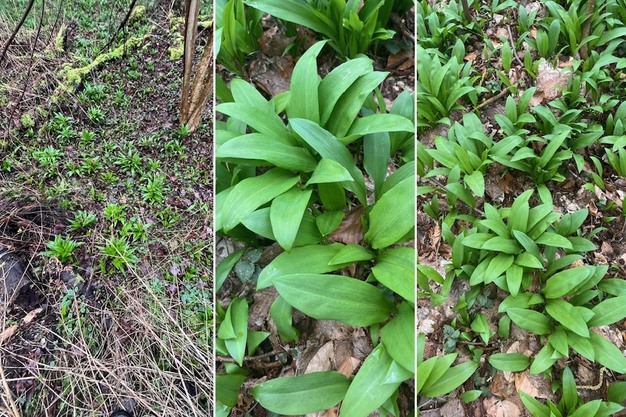With the first yields from domestic wild harvesting in calendar week 10, this year's wild garlic campaign is getting off to a relatively early start. "Even though it has gotten a bit colder recently, the relatively warm February accelerated the growth of wild garlic in the early harvest areas," says Georg Thalhammer, who has dedicated himself to the sourcing and marketing of organic wild garlic for about 30 years. Initial forecasts indicate that both the quantities and the quality of the goods from wild harvesting in South Germany are good. "We now hope that there will be no more frosts."
According to Thalhammer, the season start in the early harvest areas is particularly competitive. "Everyone tries to market the first domestic goods as early as possible, as higher prices can be demanded for the product at the beginning of the season. In about two to three weeks, there will be enough goods to supply the market comprehensively," says the organic specialist, who sources the organic wild garlic from collection areas throughout southern Germany. He supplies both the food retail trade, discounters, and the organic food specialty trade, and in addition, the Bavarian company operates an online shop for private customers.

Compared to last year, a price increase of 7-8 percent has already been achieved, Thalhammer continues. "Nevertheless, we would need a price increase of 20 percent to somewhat offset the omnipresent cost increases. This not only concerns harvest and transport costs but also product-specific costs, as forest owners and nature conservation authorities are demanding more and more money for the wild harvesting permit."
Right: Georg Thalhammer (r) is a passionate organic pioneer and founder of the company that bears his name. On 1.3.24, he officially stepped down as managing director and passed the baton to Nikolai Timaeus and Barbara Burk-Bieberstein. At the same time, the company changed its name to Georgs Bio-Bauern & Co. Handels KG.
founder of the company that bears his name. On 1.3.24, he officially stepped down as managing director and passed the baton to Nikolai Timaeus and Barbara Burk-Bieberstein. At the same time, the company changed its name to Georgs Bio-Bauern & Co. Handels KG.
Rising demand in retail
Wild garlic is harvested, among other places, along the Rhine, in the Würzburg area, and in Thuringia. "You start at 100-150 meters above sea level and then move up a little every 14 days. Until the first week of May, wild garlic can usually be sourced relatively easily, after which it slowly becomes exciting." Thalhammer also refers to the organic quality of the wild garlic. "It is a product from wild collection, meaning from deciduous forest areas. Both the organic and conventional product is therefore free from chemical use, which makes the differences between both categories much less significant than with many other items. This also contributes to a comparatively high organic share."
In the food retail trade, organic wild garlic is mainly offered in 50 or 100g units. For a few years now, it has been possible to do without a tray using a flow pack. Thalhammer: "We find that wild garlic is well received every year and across all buyer groups. Therefore, the product is enjoying increasing popularity and we look forward to the future with optimism."
Images: Georgs Bio-Bauern GmbH & Co. Handels KG
For more information:
Georg Thalhammer
Georgs Bio-Bauern GmbH & Co. Handels KG  Tannenweg 10
Tannenweg 10
97854 Steinfeld
Tel.: 09359 - 9739012
Fax: 09359 - 9739099
Email: info@georgs-biobauern.de
www.georgs-biobauern.de
